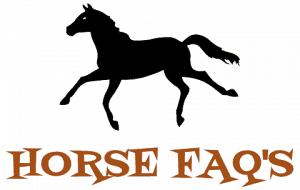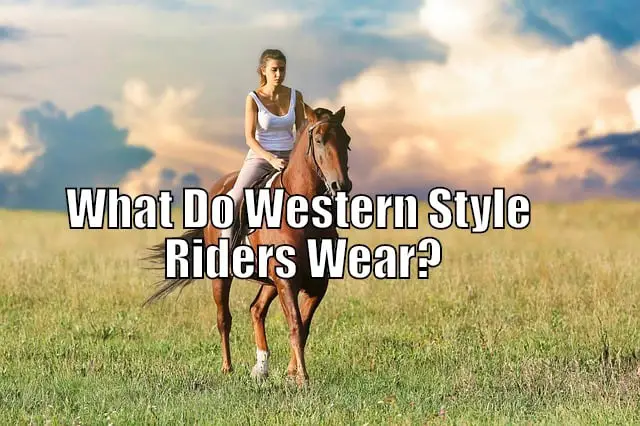When you first ride, it is enough to wear long, fitting pants and a smooth shirt, depending on the weather, a sweater or a jacket. If you have the opportunity, you can buy a hard-footed shoe with a 2-3cm heel. Most riding hall gives you a bunch of nobs, but some are not, so you have to take care of it yourself.
What Do Western Riders Wear? If you’re already riding more seriously then it’s time to get things like riding trousers, leggings, riding boots and gloves. It is worth taking riding gloves, as the stem can easily rub your hands with water blisters.
Dress
Riding Trousers: riding trousers are important, but leggings are also suitable for riding, which is at least reach your ankle. On the other hand, the riding trousers are specially designed to protect the knee, as the material is secured to prevent the saddle from rubbing.
Leg protector: we call it chaps, anklet. The purpose is not to let the saddle rub the leg. Comes in handy if you ride a shoe with a small heel (2-3cm)
Riding shoes: riding shoes are used for safer riding. This is a specially crafted shoe, has a small heel, a flat sole and a soft base, and its legs fit as closely as possible to the shape of the horse’s leg.
Gloves: gloves are an important part of riding. It is worth investing one if you do not want the stem to rub your hands and water blisters on it.
Riding boots: the same purpose as the leggings, the saddle cannot harness your feet.
Nob: if you fall off the horse, it will dampen the blow and protect your head from possible damage.
Shiv and spurs: recommended for more experienced riders. Those who do not know how to use it, however, they do it anyway, they can cause serious injuries to the horse.
The chaps are a dilemma of riding
You can choose from a wide selection of leggings or riding boots. You can choose between colors, patterns, and brands as you like. However, these are not the main aspects, but comfort and practicality.
Those who chose the leg protector
In the opinion of the leg protector and bootleg users, this is more practical and cheaper than the boots in terms of price. For frequent riding, choose a washable chap that can be washed up to 40 C in a washing machine thanks to its special material. For a stronger calf, choose a leg protector that has an elastic part sewn around the zipper or velcro, making easier and easier to pick it up. In the summer, the riding boots and the leggings are warmer, more comfortable to remove and you can choose from rubber and leather shoes as well as leather and velour footwear.
Who choose the boots
In terms of price, this is a more expensive product, especially if we make customized leather boots. If you are a frequent participant in a competition, an elegant cowhide product is recommended. The rubber version can be very hot in the summer, it is difficult to take off, and in winter it keeps your feet cool and stiff. This can obstruct the loose seat and the correct footrest. If the boots are definitely closer to us, the lined version can be suitable for winter riding. In the case of large mud, however, it is preferable to draw more boots, which is easier to pull after riding.
Characteristics of cowboys
Like so much in the history of modern America, the history of cowboys began with the moor of Santa Maria.
Of course, they didn’t jump off the shipboard in leather-knit, leather-worn western boots, still known today, with their lasso in their hands. The Spaniard were those who brought domesticated cattle on the one hand and the horses on the other hand to the New World. And they were the ones who had the first vaqueroes in the area of today’s Mexico, which was translated into English by the term cowboy.
Their company later expanded with new groups of new immigrants from Europe, and then joined a large number of liberated black and native Indians. Each group added to the well-known appearance of cowboys (and later cowgirls). Everyone who was a cattle driver carried the traditions of his own people, which appeared in the purpose and decoration of garments for practical purposes. These elements then got a special American flavor and they developed the later cowboy style we know today.
This distinctive look permeates from the top to the bottom with the appearance of a cowboy, all of its elements being part of the true western lifestyle.
Let’s see what a real cowboy’s clothes and tools stand for!
They wore a western hat made of leather or hard bodice with a wide flange to protect them from the burning sun and branches of the bush. They are known for their style, one of which is related to sombreros and contemporaries.
On their faces, the bandana wore a cotton sweater that protected the dust from storms and warmth, impregnating the sweat in the heat.
As trousers, jeans or coarse trousers were pulled to protect their feet from injuries while riding, and their softer inner seam tried to spare their thighs from blistering.
Their trousers – as further protection – were also covered with leather trousers called chaps, which protects against the branches scratches and between moving animals. This garment, consisting of two trousers and a waistband that connects them strongly
they were fastened with a leather belt over their trousers, often decorated with a traditional embroidery belt buckle.
Their feet were protected by western boots, with a pointed nose that enters the shackle, their spiky, high-heeled corners serve to preserve it in their work. The boots are often protected by the nose of the boots from material damage.
Their gloves are often made of deer leather so that they can be flexible in their hands while gripping rough ropes, tools, and vegetation.
Their upper body was usually covered with long-sleeved western shirts, which were often decorated with brightly colored folk motifs typical of the area and national roots.
Depending on the weather, they are often made of leather jackets and leather jackets, but wearing a long canvas coat called duster can be considered general. It protected them and their clothes from the dust of the windstorms, and their long rear slit didn’t stop them from riding the whole day.
As time went on, cowboys wear accessories such as an American tie made of braided leather and a metal ornament that combines it, and boots or collar decoration.
These, as well as the garments themselves, largely reflected the specificities of the countryside and, of course, the individuality of the wearer.
In addition to their work and to the hard world of their ages, there were many objects that were inseparable from the image of the cowboy.

